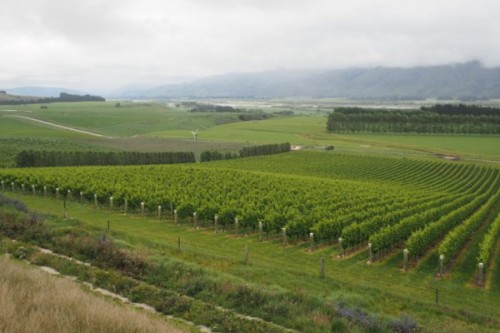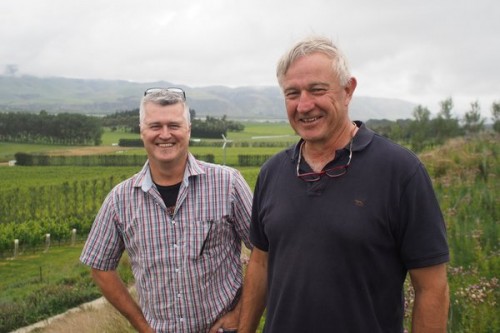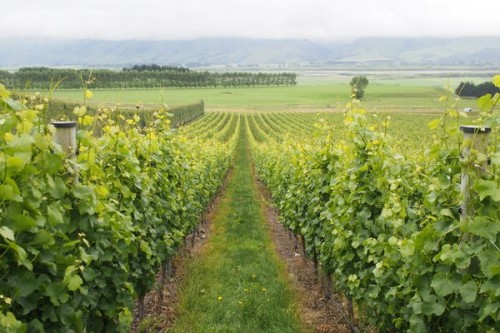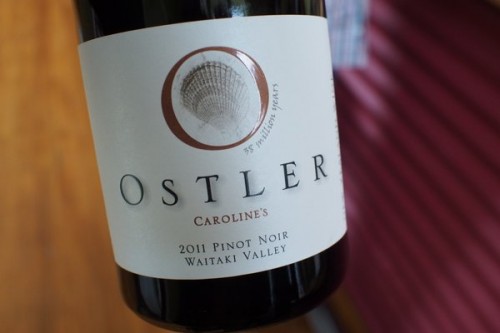
After leaving Central Otago, we drove to a wine region that I’d never visited before. It’s New Zealand’s newest and probably smallest wine region, the Waitaki Valley. A few years ago, people were getting very excited about Waitaki, largely because of the promise of limestone soils and a cool climate. Some of that excitement has since dissipated: it’s not just cool, but properly cold, and only some of the soils are limestone (the rest are more alluvial). It’s so marginal that many of the first wave winegrowers have since sold up and got out of the game. But one producer seems to be doing quite well: Ostler.

Ostler is a joint project between Jim Jerram, an ex-medic from Dunedin, and winemaker Jeff Sinnott. They decided to start the project in 1998 and first planted vines in 2002. It took them five years to pluck up the courage, and they only began in earnest when property developers moved in to start establishing lifestyle vineyard operations in the region.
They’d spent some time modelling the climate in the area, but decided eventually to take the plunge. ‘The best indicator [of a suitable climate] is to plant the vines,’ says Sinnott. It turns out that despite their sophisticated interpolation of temperature from the available climate data, their site was 10% cooler than they had anticipated.

They have a lovely site planted on lime soils on a gentle gradient, and there are 8 hectares of vines in all. The top soil has a pH of 6.2 while the lime subsoil is at 9. They planted all five available clones of Pinot Noir and then later some Pinot Gris.
They also have some further sites on alluvial soils on the valley floor, Lakeside and Blue House. Two years in 10 you don’t get anything here because the climate is so marginal, but recently the installation of frost fans has made a huge difference, not only in terms of mitigating frost risk, but also in bringing the average temperature up slightly. This, they hope, will help make the project – which is already a good success – much more solid from a financial standpoint.

How are the wines? They’re plenty good enough to suggest that working in this marginal climate is well worth all the pain and risk. Riesling from Lakeside is very impressive and quite exotic, as is the Blue House version of this variety. Pinot Gris is also really nice, and here we get to see the difference between alluvial and limestone soils. The former is lively with spice and appealing texture, showing the benefit of new clone 457. The latter is more aromatic and very rounded with some pear and ripe apple. Pinot Gris has real potential here.
But it’s the Pinot Noirs that really excel. We tried a vertical of Caroline’s, the top Pinot, taking in 2005, 2008, 2010, 2011 and 2013. These are superb, with particular favourites being the 2005, 2011 and 2013. There’s a freshness, vitality and elegance to these wines, which show keen acidity but also some generosity. There’s a lot of potential in the Waitaki Valley in the right sites, it seems, and it is very encouraging that the wines age so well.
Leave a Comment on In NZ day 2, Ostler, Waitaki Valley